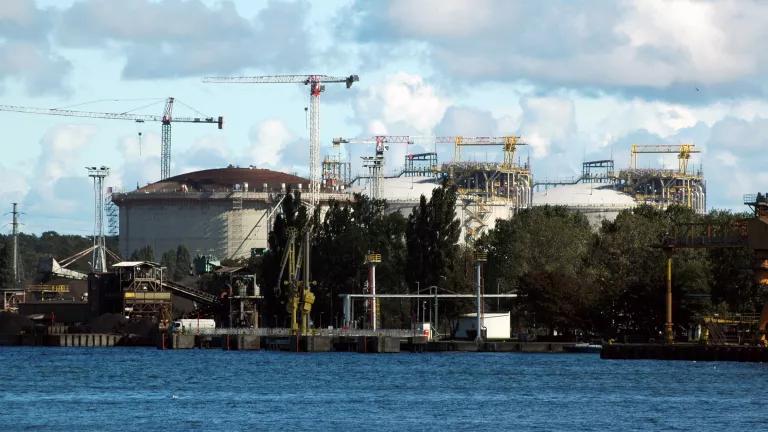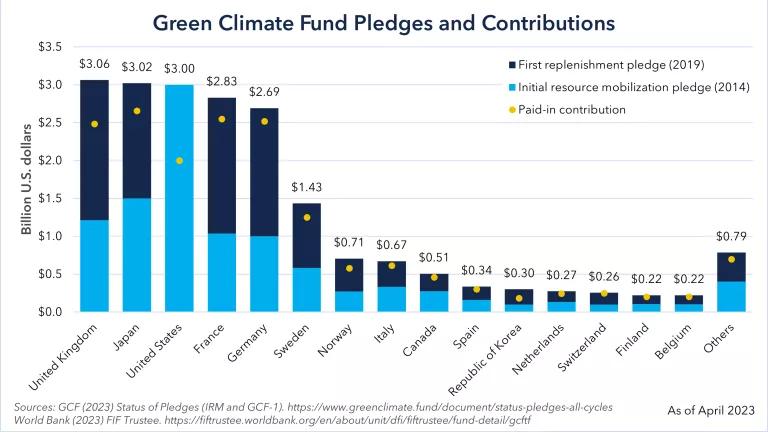Green Banks: Taking Climate Finance from Pledge to Project
Local green banks and development finance institutions have a key role to play in channeling public finance to where it’s most needed most and unlocking private capital to jump start new local green markets.

A key theme at the COP26 climate summit in Glasgow is how—and when—wealthy nations will deliver on their promise to mobilize public and private finance to help developing countries reduce their own emissions and adapt to the worsening impacts of climate change. Amidst concerns about missed targets and announcements of new pledges, it’s important to remember that the true measure of success or failure will be whether climate finance pledges are translated into actual projects. As NRDC’s President, Manish Bapna, noted during a COP26 event co-hosted by NRDC: “In five years the metric won’t be how much money signs up for private or public finance, but what are the projects being funded and what is the impact of those projects, and in that context the role of green banks and the role of local development finance institutions plays an absolutely critical role.”
A model with proven impact and flexibility
Over the past ten years, the green bank model has proven effective at using limited public funds to mobilize far larger amounts of private capital. By de-risking projects, providing patient capital, creating new financial instruments, building local capacity and helping to demonstrate new technologies, green banks have been at the forefront of green finance innovation. Collectively, the members of the Green Bank Network have invested or committed US$50.4 billion in climate projects since the first green bank was founded in 2012, leveraging private investment in projects valued at US$134.7 billion. Today 27 green banks exist in 12 countries, and an additional 20 jurisdictions are exploring some form of green bank solution: whether a standalone institution, a separately managed green facility, or transforming a public development finance institution into a green finance leader.
Co-hosted with partners from the Green Bank Design Platform, Green Bank Network, Inter-American Development Bank, Latin American Association of Development Finance Institutions, and the Minas Gerais Development Bank, our two-session event, “Banking on Green: The role of green banks and development finance institutions in mobilizing private investments into climate solutions,” (recordings available here) brought together green finance experts from across the globe to discuss how institutional innovation can help drive climate action in their countries. Despite speakers representing very different markets and circumstances, three common themes were evident:
1. Public funds must help unlock international and local private capital
As Juan Ketterer, Division Chief at the Inter-American Development Bank noted, “Today is the time for scaling. We don’t have more time to do small or boutique projects…that means the role of public money can no longer be funding projects…it has to be something different; it has to be mobilizing and attracting capital.”
From Australia to Scotland and beyond, green banking experts highlighted how green banks can use limited public funds to help green projects—whether big or small—get over the finish line. In Australia, the Clean Energy Finance Corporation unlocked a transmission project that helped connect clean energy sources to the grid. In Scotland, the Scottish National Investment Bank invests in small tidal generation units that power island communities and EV chargers with cleaner sources of energy.
2. Green mandates coupled with a flexible toolkit create impact
Whether their missions are focused narrowly on clean energy or more broadly on net zero investments or SDG-aligned projects, all the institutions had clear green mandates that guided their investment decisions and helped determine the types of financial tools they deploy. The mission of New Zealand Green Investment Finance is to accelerate investment in the country’s low emission future. To this end they provide guarantees or invest in equity, debt or sub debt. Meanwhile, Rwanda’s Green Fund-FONERWA is partnering with Bank of Rwanda to offer both a project preparation facility that will help build a bankable pipeline of green projects, and a credit facility that will offer debt, equity or venture capital to work with the broader ecosystem of investors.
3. Partnerships that leverage complementary roles are crucial
As demonstrated by recent announcements at COP, international commercial banks and investors have a growing appetite for climate investment in emerging markets. However, they often lack the necessary local market knowledge. Similarly, multilateral development banks and climate funds can offer concessional finance but lack the deep local roots necessary to identify project pipelines and build local capacity. Local green banks, green facilities, or national and subnational development banks can be the last link in the chain between international climate finance and getting a suite of projects off the ground.
In India, Tata Cleantech Capital plays a key role in standardizing contacts and aggregating small-scale roof top solar projects. In South Africa, the Development Bank of Southern Africa’s Climate Finance Facility will use its deep understanding of the local commercial banking sector to overcome barriers to financing clean energy and water infrastructure projects. Meanwhile in Brazil, the Development Bank of Minas Gerais (along with the DC Green Bank one of two new Green Bank Network members announced at COP26) has tapped funds from international climate donors to develop municipal clean energy, sanitation and other climate projects and has also issued green and sustainable bonds to further raise capital for local green projects.
Supporting local green financing institutions is a critical next step for climate finance
When the COP26 dust settles we need a clear forward looking strategy for taking climate finance commitments from pledge to project. Local green banks—whatever form they may take—have a key role to play in channeling public finance to where it’s most needed and unlocking private capital to jump start new local green markets and opportunities.




